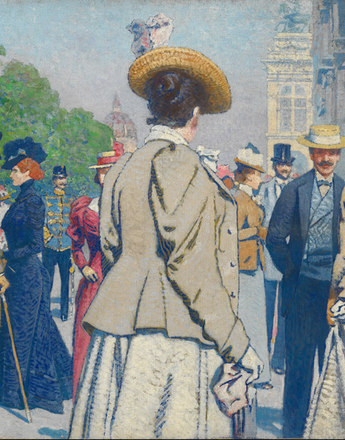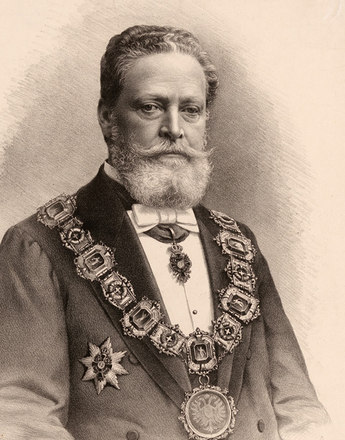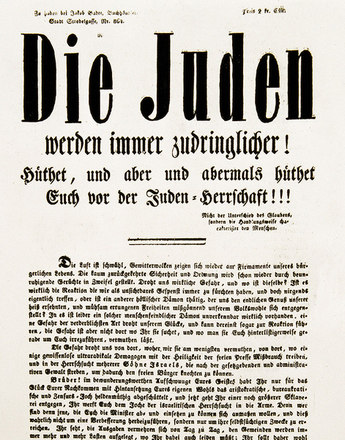With Karl Lueger's election as Mayor of Vienna in 1897, political anti-Semitism reached its climax and became a social force dominating everyday life.
The period between 1890 and 1910 saw a phase of populist mass politics that was decisively dominated by Karl Lueger's anti-Semitism. As leader of the Christian Social party, he represented a verbally radical anti-Semitism, effectively establishing an anti-liberal middle-class block with clerical, anti-Semitic and anti-socialist values, which attracted above all the disoriented petty bourgeoisie and middle-class.
Karl Lueger had a pronounced sense for demagogic language and adopted an anti-Semitic stance for tactical reasons. In the Christian Social party, anti-Semitism became the political instrument for mobilising the masses. Lueger developed a xenophobic and anti-Semitic cultural code that became the set of values that gave his supporters a sense of identity. Lueger's populist rhetoric of stereotyping Jews as outsiders enabled the Viennese to form an imagined community by process of differentiation.
Lueger's anti-Semitic attitude had but little ideological basis. He made random use of religious, economic and racial anti-Semitic positions. This opportunist approach was expressed in the cynical claim: "I determine who is a Jew".
On the one hand, Lueger's position was based on a long tradition of religious anti-Jewish resentment. He made use of the popular myths of Catholic anti-Jewishness that had been passed down over centuries and supported by official Church doctrine. In addition, Lueger exploited the economic anti-Semitism in which Jewish industrialists and bankers were regarded as the cause of social problems. Jews were the "specialists in vile profits", they were accused of a "disproportionate addiction to monetary profits" and the "expropriation of the indigenous population".
By merging the different anti-Jewish positions, Christian Social anti-Semitism achieved a particularly explosive mass-mobilisation effect. In its core, the exclusion and defamation of Jews was, however, a means to an end, the mobilisation of the people against the old elites and the elimination of liberalism.
Translation: David Wright
Bunzl, John/Marin, Bernd: Antisemitismus in Österreich. Sozialhistorische und soziologische Studien, Innsbruck 1983
Maderthaner, Wolfgang/Musner, Lutz: Die Anarchie der Vorstadt. Das andere Wien um 1900, Frankfurt/New York 1999
Pulzer, Peter: Die Entstehung des politischen Antisemitismus in Deutschland und Österreich 1867 bis 1914, Göttingen 2004
Weiss, John: Der lange Weg zum Holocaust. Die Geschichte der Judenfeindschaft in Deutschland und Österreich, Hamburg 1997
-
Chapters
- Antisemitism: A historical definition
- Jewish life in the Habsburg Empire
- Anti-liberalism – anti-capitalism – anti-Semitism
- Antisemitism as a political movement
- "I decide who is a Jew"
- The social exponents of Austrian anti-Semitism
- Anti-Semitism in other nationalities within the Habsburg Monarchy
- The Habsburg Monarchy as the guarantee of pluralistic identities
- Jewish soldiers in the Austro-Hungarian army
- The "Eastern Jews" as a pivotal point for anti-Jewish agitation
- The breakdown of the internal peace





